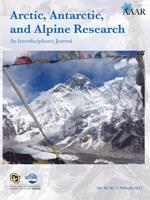When I accepted the task of reviewing this book I did so because of my long-standing interest in the Arctic, although I have never visited the Northwest Canadian Arctic, that is, the area of and west of the Mckenzie River. I can certainly relate to the statement, “The north forgives every sin except stupidity” (p. xiii), and have to profess my sins. However, I had assumed, given its subtitle, Life on the Great Hunt, that the book would largely be a discussion of traveling and living with First Nations people.The book is much more than this and should probably be classified as a study in social anthropology and metaphysical in its beliefs. Because of this, then, my review will undoubtedly not be as insightful as someone with a deeper knowledge and interest in the beliefs and mores of both the First Nations “Indian” people and the Innuit.That said, I must admit that I enjoyed reading the book and learned more than I had expected. A central tenet of the book is expressed in this sentence, “They had their histories, too, encoded in the land through oral traditions, through place names, rocks, rivers, heights, and even animals.” (p. 7). Many of these traditions are now being eroded by the inroads of “civilization” into the homes and lives of the First Peoples. However, the author clearly believes that these oral histories and knowledge have importance and suggests three basic premises (p. 7) that can be summarized as follows: (1) subsistence relationships to the Land are fundamentally different than individuals living in modern agricultural and industrial societies; (2) knowledge about the subsistence technology of First Nations may be of value in editing knowledge from the European archeological record; and (3) the history of the encroachment of civilization into the traditional northern ways of life may teach “…valuable and universal lessons about human potential…” (p. 8).
The author writes with obvious delight, indeed lyricism, about the people and the environment, and in the foreword asks that “…the north and its peoples forgive me for an excess of delight in the freedom of its wild spaces.” Larry Frolick divides the Northern year, and hence the chapters in this book, into its fundamental seasonal divisions, namely: Winter, Spring, Breakup, Summer, and Fall. Each chapter is illustrated with a compelling black-and-white image. The focus of the book is on the Gwich'in people and aspects of their routine as trappers and subsistence hunters, but there is also a visit to Arviat on Hudson Bay and a discussion of the stalking habits of “king bear,” also known as the polar bear . There is a fascinating discussion of the differences in dog breeds and an introduction to a new breed, the “bear dog,” which was introduced to protect against grizzly bears and which include “…the spitz, the beagle, and border collie in their ancestry.” (p. 42).
To potential readers who have a love for the Arctic, its landscapes, seasons, and peoples, I highly recommend this beautifully composed and lyrical description of the traditions and way of life that struggle to keep their place in the modern world.
Larry Frolick has degrees in law and anthropology, a Master's degree in Communication & Social Policy at Athabasca University (2012). He is the author of seven previous books. He is also currently Communications Head of the Finance Department, of the Government of the Northwest Territories.





